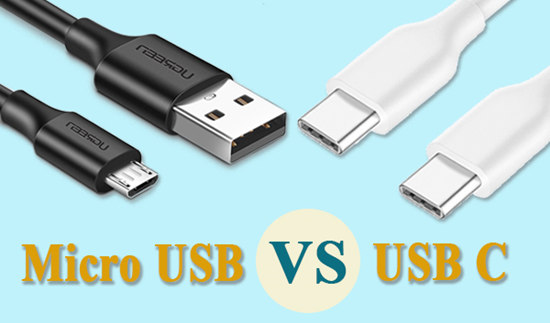USB VS USB C Charging | ZONSAN
USB Type-C is a newer connector that is also used to connect devices to computers and other devices. It is a reversible connector that is capable of transmitting data, power, and video signals. Like USB, there are several different versions of USB Type-C, including USB 2.0, USB 3.0, and USB 3.1.

Here is a brief overview of the main differences between USB and USB Type-C:
Shape: One of the most obvious differences between USB and USB Type-C is the shape of the connector. USB connectors are typically rectangular and have a standard orientation, while USB Type-C connectors are smaller and symmetrical, meaning they can be plugged in either way.
Data transfer: Both USB and USB Type-C can be used to transfer data. However, the data transfer rates of USB Type-C are generally faster than those of USB. For example, USB 2.0 supports a data transfer rate of up to 480 Mbps, while USB Type-C 2.0 supports a data transfer rate of up to 10 Gbps.
Power delivery: Both USB and USB Type-C can be used to charge devices. However, USB Type-C is generally able to deliver more power than USB. For example, USB 2.0 can provide up to 2.5 watts of power, while USB Type-C 3.1 can provide up to 100 watts of power.
It's important to note that the data transfer rate and power output of a USB or USB Type-C port or device are not necessarily determined by the version of the connector it uses. For example, a device with a USB 2.0 port may be able to provide more power than a device with a USB Type-C 3.0 port. Similarly, a device with a USB Type-C 3.0 port may be able to transfer data at a faster rate than a device with a USB 2.0 port.
Shape: One of the most obvious differences between USB and USB Type-C is the shape of the connector. USB connectors are typically rectangular and have a standard orientation, while USB Type-C connectors are smaller and symmetrical, meaning they can be plugged in either way.
Data transfer: Both USB and USB Type-C can be used to transfer data. However, the data transfer rates of USB Type-C are generally faster than those of USB. For example, USB 2.0 supports a data transfer rate of up to 480 Mbps, while USB Type-C 2.0 supports a data transfer rate of up to 10 Gbps.
Power delivery: Both USB and USB Type-C can be used to charge devices. However, USB Type-C is generally able to deliver more power than USB. For example, USB 2.0 can provide up to 2.5 watts of power, while USB Type-C 3.1 can provide up to 100 watts of power.
It's important to note that the data transfer rate and power output of a USB or USB Type-C port or device are not necessarily determined by the version of the connector it uses. For example, a device with a USB 2.0 port may be able to provide more power than a device with a USB Type-C 3.0 port. Similarly, a device with a USB Type-C 3.0 port may be able to transfer data at a faster rate than a device with a USB 2.0 port.

